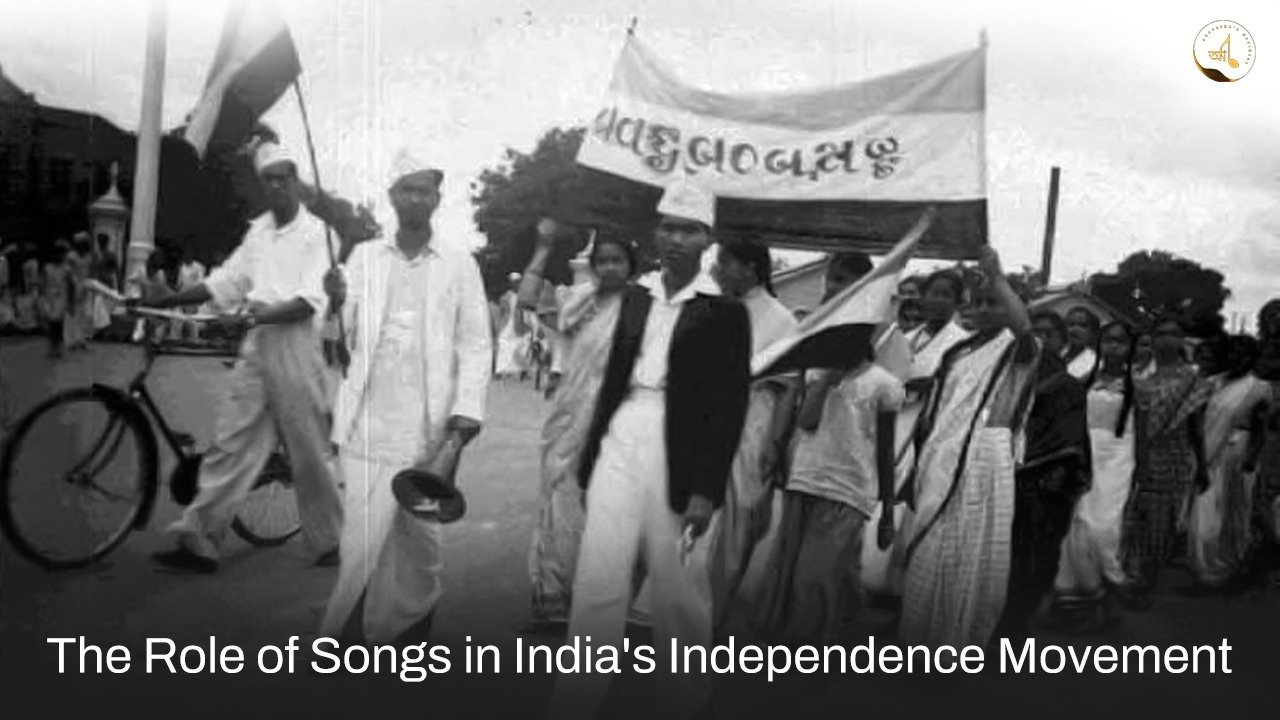India's struggle for independence from British colonial rule was not just a political battle but also a cultural and emotional one. Music played a crucial role in uniting people, spreading the message of freedom, and inspiring countless individuals to join the movement. This blog delves into the history of protest songs during India's fight for independence, highlighting key songs and their impact.
Early Beginnings
The use of music as a form of protest in India can be traced back to the late 19th century. One of the earliest and most iconic protest songs is "Vande Mataram," written by Bankim Chandra Chattopadhyay in 1870. The song, which praises the motherland, became a symbol of resistance against British rule. It was first sung at the 1896 session of the Indian National Congress and quickly gained popularity among freedom fighters.
Rabindranath Tagore's Contributions
Rabindranath Tagore, a Nobel laureate and a prominent figure in the Indian independence movement, made significant contributions to protest music. His song "Jana Gana Mana," written in 1911, was initially composed to honour the Indian National Congress. It later became the national anthem of India, symbolising unity and the spirit of freedom.
Another notable song by Tagore is "Ekla Chalo Re" (Walk Alone), written in 1905. This song encouraged individuals to continue their fight for freedom, even if they had to do it alone. It became an anthem for many freedom fighters, including Mahatma Gandhi, who often sang it during his campaigns.
Songs of the Non-Cooperation Movement
The Non-Cooperation Movement (1920-1922), led by Mahatma Gandhi, saw a surge in the creation and use of protest songs. These songs were used to mobilise the masses and spread the message of non-violent resistance. One such song is "Raghupati Raghav Raja Ram," a devotional song that Gandhi often sang during his marches. It became synonymous with the movement and inspired many to join the cause.
The Role of Indian Cinema
Indian cinema also played a significant role in the independence movement by producing films and songs that highlighted the struggle for freedom. The 1943 film Kismet featured the song "Door Hato Ae Duniya Walon," which subtly criticized British rule and encouraged Indians to fight for their rights. Despite the censorship, the song became immensely popular and resonated with the masses.
Songs of the Quit India Movement
The Quit India Movement of 1942 marked a crucial phase in India's struggle for independence. During this period, several protest songs emerged, galvanising the public to demand an end to British rule. One of the most famous songs from this era is "Kadam Kadam Badhaye Ja," composed by Ram Singh Thakuri. This song was adopted by the Indian National Army (INA) and became a marching anthem for its soldiers.
Legacy of Independence-Era Protest Songs
The protest songs of the independence era left a lasting legacy on Indian music and culture. They not only played a pivotal role in the freedom struggle but also laid the foundation for future generations of protest music. These songs continue to be remembered and celebrated for their contribution to India's independence.
Conclusion
The history of protest songs during India's independence movement is a testament to the power of music in inspiring change and uniting people. From "Vande Mataram" to "Kadam Kadam Badhaye Ja," these songs played a crucial role in mobilising the masses and spreading the message of freedom. As we reflect on India's journey to independence, it is essential to remember and honour the songs and artists who contributed to this historic struggle.

บุหรี่ไฟฟ้า relx relx infinity relx infinity plus ร้านขายหัวพอต relx ใกล้ฉัน ราคาบุหรี่ไฟฟ้า relx zero relx artisan relx บุหรี่ไฟฟ้า relx เยว่เค่อ เยว่เค่อ บุหรี่ไฟฟ้า บุหรี่ไฟฟ้า relx ซื้อบุหรี่ไฟฟ้าออนไลน์ เยว่เค่อ บุหรี่ไฟฟ้า relex เยว่เค่อ relx บุหรี่อิเล็กทรอนิกส์ เครื่อง RELX ของแท้ เครื่อง RELX รุ่นล่าสุด RELX บุหรี่ไฟฟ้า ราคาถูก เครื่องสูบบุหรี่ไฟฟ้า พอตไฟฟ้า relx เครื่องบุหรี่ไฟฟ้า ราคาถูก รสชาติหัวพอต RELX หัวพอต RELX แนะนำรสชาติหัวพอต RELX หัวพอต relx หัวพอต relx ประเทศไทย รสชาติบุหรี่ไฟฟ้า หัวพอตบุหรี่ไฟฟ้า relx รุ่น 5 relx รุ่นห้า relx รุ่น 5 ตัวเครื่อง relx รุ่นห้า ตัวเครื่อง หัวพอด relx รุ่น 5 หัวพอด relx รุ่นห้า relx รุ่น 6 relx รุ่นหก เครื่อง relx รุ่น 6 เครื่องรุ่นหก relx เครื่องรุ่น 6 ของ relx เครื่อง relx รุ่นหก เครื่องรุ่นหกของ relx หัวน้ำยา relx รุ่น 6 หัวน้ำยารุ่น 6 ของ relx หัวน้ำยา relx รุ่นหก หัวน้ำยา relx 6 รุ่น หัวน้ำยา relx 6代 adidas samba nike air force 1 nike dunk samba adidas originals yeezy 愛 迪 達 鞋子 nike sacai nike 鞋子 nike vomero 5 nike x sacai nike 拖鞋 nike sneakers nike zoom vomero 5 yeezy slides
Leave a reply
asdasd
2025-11-08 01:52:23
aa
2025-11-08 01:51:40
aa
2025-10-22 22:05:08
asdas
2025-10-04 13:00:14
sad
2025-09-21 23:57:25
Jasjwhwj
2025-08-28 13:29:53